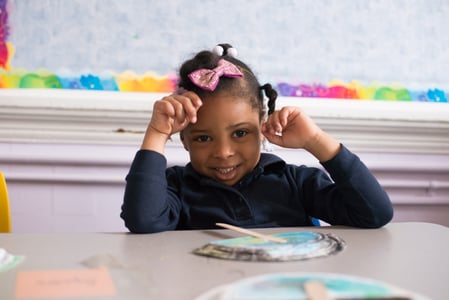
May was a busy—and very confusing—month for federal budgets. First, on May 7th Congress finally passed, and the President signed, a federal budget for Fiscal Year 2017--the budget year that we are more than half way through! In addition, on May 23, the President came out with his Fiscal Year 2018 budget, which would start October 1. We wanted to take a minute to break these budget events down and discuss what it might mean for schools and programs using the CLASS, such as Head Start, and what it might mean for child well-being more generally.
FY2017 Budget
First, the FY2017 budget. To review, FY17 is the federal budget year that runs from October 1, 2016 to September 30, 2017. Every year, Congress is supposed to pass a budget that outlines the amount of money that is allocated to each federal program. If they don’t do it, the government shuts down, and that is why almost every year you hear on the news the threat of a “government shutdown.” When Congress can’t pass a budget but doesn’t want the government to shutdown, it passes a Continuing Resolution, which usually continues to fund programs at their current levels until Congress can pass a budget with new funding amounts.
This year, Congress passed three Continuing Resolutions that kept the government open until May 7. In general, Continuing Resolutions are problematic for organizations running federal programs because they have no idea how much they have to spend for the year. Programs have been especially hesitant this year, when there was so much talk of budget cuts, to spend their federal funding because they had no idea whether there would be significant cuts to their program budgets once the federal budget finally passed. This impacted hiring, the purchasing of products, and pretty much anything else associated with program operations.
The federal budget legislation passed on May 7th, entitled the Consolidated Appropriations Act, ended this uncertainty by fully funding programs through September 30th of this year. Depending on your perspective, early childhood programs did well in the budget (or at least there was no harm done). The legislation largely maintains or slightly expands funding for federal programs touching early care and education, and does not include controversial changes or increases such as funding for the border wall. The Office of Head Start sent out a Program Instruction on Head Start funding, which you can find here.
Below, we have provided the appropriations levels for key early care and education programs through the end of FY17. Detailed summaries of the 11 appropriations bills within the spending measure can be found online.
FY18 Budget
Next, the fight over the FY18 budget. With the FY17 budget set, the President and Congress have started budget negotiations on FY18 budget, which starts on October 1st of this year. The process started with the President releasing a budget that proposes significant cuts to numerous programs ranging from nutrition programs to Medicaid that support poor children and families. At the same time, the President’s budget barely touches early childhood programs and actually proposes a new parental paid leave program out of the Department of Labor. In short, the budget leaves us confused and wondering about this mixed approach with both cuts and expansion of programs for children and families in the budget overall.
Luckily, the President’s budget proposal is just a recommended budget for Congress to consider, and Congress will determine the amounts appropriated to run the important federal programs and policies that support state and local efforts to serve children and families. We will keep you updated on the budget process as it moves forward.
FY17 Budget Highlights for Early Care and Education Programs (funding through Sept. 30, 2017)
Head Start
$9.3 billion, which includes $85 million more for a cost-of-living adjustment for Head Start grantees.
Child Care and Development Block Grant
$2.9 billion, which is $95 million more than the FY16 enacted level.
Preschool Development Grants
There are two versions of Preschool Development Grants (PDG). One refers to the grants to support the expansion of high-quality Pre-K in states, while the newer PDG program supports coordination and collaboration among early learning programs in states. The spending bill includes $250 million for Preschool Development Grants, which funds the fourth and final year of the expansion grants. The Preschool Development Grants that support coordination were not funded, but the budget requires the Department of Health and Human Services to prepare for the new Preschool Development Grants. The budget shifts the authority of these grants from the Department of Education to the Department of Health and Human Services. It is likely that the new Preschool Development Grants will be funded in the FY18 budget.
Special Education
Funding for special educations programs for children birth to five remained the same. IDEA Part C (for early intervention) was funded at $458.6 million and Part B, Section 619 (Preschool Special Education) was funded at $368.2 million.
Note: As we prepped this summary of the federal budget process and an overview of the Consolidated Appropriations Act, signed by the President on May 7th to fund the federal government for Fiscal Year (FY) 2017, he presented his full budget for FY18 on Tuesday, May 23rd. We hit pause: do we keep the focus on FY17 in light of the FY18 budget? Answer is: yes – we can’t afford to be distracted from what can now be funded with the bump in education and health and human services funding in FY17’s budget. While we must keep a watchful eye on the FY18 budget negotiations now that the President has made his budget priorities clear, we can and must ensure the funds for FY17 are put to good use.

